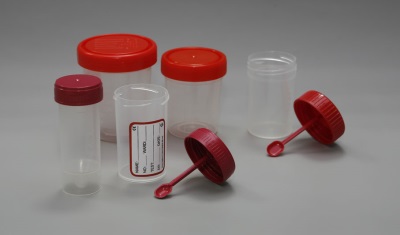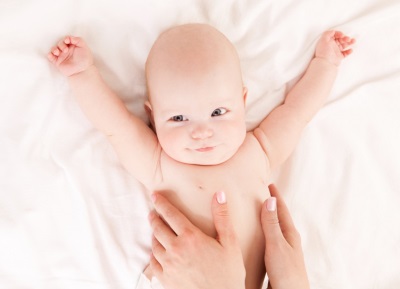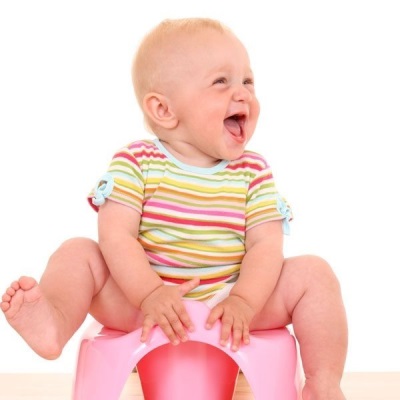Analysis of feces in a child
The study of the child’s feces is important for determining the state of the gastrointestinal tract and diagnosing possible problems in his work. How to collect baby's feces for analysis, why do it and how to decipher the result of the survey?
Indications
By comparing the performance of baby's feces with the norm, you can find out:
- Are there any irregularities in the pancreas, stomach, liver, intestines?
- As a child digests in the body of fat, protein or carbohydrate foods.
- Whether there is an infection with ascaris, lyambliya and other parasites.
- What pathogen has caused the intestinal infection in a child and what antibiotics will help to cope with it.
Kinds
- Stool microscopy - is carried out to identify helminthiasis, infection with protozoa or bacteria. For such an analysis it is very important to bring fresh feces to the laboratory.
- Bacterial analysis (seeding tank) - helps to identify the pathological flora that caused the intestinal infection. Antibiotics are not recommended for 3 days prior to testing.
- Coprogram - A general study of feces, studying its physical parameters, as well as the content in the fecal masses of organic compounds, blood cells, bile pigments and other inclusions.
- Scraping for enterobiasis - helps to identify the eggs of parasites in the infant folds of the child.
- Test for occult blood - allows you to quickly identify intestinal bleeding.
- Analysis of dysbacteriosis - examines the composition of the normal intestinal microbial flora, and also determines the sensitivity of pathogenic microbes to antibiotics.
Where to pass?
The child’s faeces can be taken for analysis to a hospital, clinic or medical center where there is a laboratory. If you donate feces to a public institution, keep in mind that tests are taken there only at certain hours (usually before 10 am).
How to collect feces from infants?
Feces should be collected in a clean, dry container with a minimum volume of 5-10 grams. For this purpose it is best to use a special container that can be purchased at the pharmacy. A spoon is added to such a container, with the help of which it is convenient to collect fecal matter of a child.
It is best to collect a sample of feces in the morning and take it fresh to the laboratory (up to a maximum of three hours after feces). In some cases, it is permissible to bring feces collected the night before to a medical facility if you store a sample in a refrigerator.
It is important that before taking feces for analysis, the child does not take any medications that can affect the work of the digestive tract. Also, it is impossible to take an enema for taking feces. The area of the anus should be well washed. In addition, it should be ensured that the urine of a child does not get into the feces taken for analysis.
It is better to collect feces not from a disposable, but from a gauze diaper, carefully taking a little of the feces from its surface. Take the particles of biological material from several points of feces. If the baby is already planted in a pot, you can collect feces from it, but it is important to wash the pot well and pour boiling water on it. To collect the liquid stool, use oilcloth or urinal.
If you are in a hurry to take the stool for analysis, but there is still no bowel movement, you can use such methods to stimulate emptying, such as the introduction of a vapor tube and a tummy massage in a clockwise direction.
Norm
Fecal masses of a healthy child consist of microorganisms, mucus, epithelial cells, undigested food particles and pigments.
Normal indicators of stool tests look like this:
- Volume - 100-250 grams (in children younger than a year from 30 to 50 grams).
- The consistency is dense, decorated (in infants like porridge).
- Color - brown (in babies yellow or light brown).
- Smell - specific fecal, not harsh (in infants is sour, and in babies-artificials - rotten).
- The reaction is slightly alkaline.
- Visible inclusions of mucus, blood, large particles of food should not be.
- A sample of bilirubin, protein, blood should be negative. Bilirubin is detected in the feces in the normal only in children of the first year of life.
- In the fecal masses of healthy children, stercobilin is detected in an amount of 75-350 mg.
- Ammonia can be detected in babies of infancy, while in older children its concentration is less than 40 mmol per liter.
- Microscopy should not be muscle fibers, neutral fat, soluble fiber, starch, fatty acids. White blood cells in feces permissible in the form of single cells.
- Worm eggs, protozoa, and yeast fungi should be absent.
Decryption
If deviations from normal indicators are minor, most likely they are associated with changes in the child's diet. Parents and the doctor should be alerted by the significant difference of any indicator from the norm.
Detection in the stool masses, helminths and their eggs and harmful bacteria indicates infection of the digestive tract by such pathogens.
Changes physical parameters of feces may be associated with the nutrition of the child, and also often indicates intestinal infections. The solid consistency of excreted feces will tell you that there are problems with motility in the large intestine. Liquid stool with foam happen with rotavirus infection.
Changes in the stercobilin level and detection of bilirubin helps to diagnose gallstone disease and liver disease. When seen under a microscope, connective tissue or muscle fibers indicate that there are problems with the work of the stomach. The presence in the feces of fatty acids and neutral fat is characteristic of enteritis, hepatitis and dysbiosis, and the identification of starch indicates problems with the pancreas.
If the sample revealed blood in the stool, there is a risk that the child has colitis or peptic ulcer. An excess of white blood cells is also characteristic of colitis. If the consistency of feces is liquid or semi-liquid, it contains mucus, carbohydrates, leukocytes and undigested fat, this is the case with acute enteritis.











